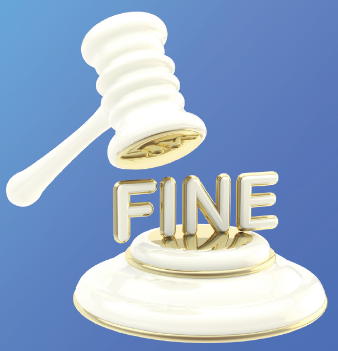By Sandra L. Gottlieb, Esq., Senior Partner and Mark Petrie, Marketing Coordinator at SwedelsonGottlieb
 On August 12, 2015, Governor Brown signed AB 596, which adds the following two new required disclosures to the Annual Budget Report for California condominium associations (this does not include planned developments or other common interest developments).
On August 12, 2015, Governor Brown signed AB 596, which adds the following two new required disclosures to the Annual Budget Report for California condominium associations (this does not include planned developments or other common interest developments).
(10) When the common interest development is a condominium project, a statement describing the status of the common interest development as a Federal Housing Administration (FHA)-approved condominium project pursuant to FHA guidelines, including whether the common interest development is an FHA-approved condominium project. The statement shall be in at least 10-point font on a separate piece of paper and in the following form:
“Certification by the Federal Housing Administration may provide benefits to members of an association, including an improvement in an owner’s ability to refinance a mortgage or obtain secondary financing and an increase in the pool of potential buyers of the separate interest.
This common interest development [is/is not (circle one)] a condominium project. The association of this common interest development [is/is not (circle one)] certified by the Federal Housing Administration.”
(11) When the common interest development is a condominium project, a statement describing the status of the common interest development as a federal Department of Veterans Affairs (VA)-approved condominium project pursuant to VA guidelines, including whether the common interest development is a VA-approved condominium project. The statement shall be in at least 10-point font on a separate piece of paper and in the following form:
“Certification by the federal Department of Veterans Affairs may provide benefits to members of an association, including an improvement in an owner’s ability to refinance a mortgage or obtain secondary financing and an increase in the pool of potential buyers of the separate interest.
This common interest development [is/is not (circle one)] a condominium project. The association of this common interest development [is/is not (circle one)] certified by the federal Department of Veterans Affairs.”
Continue reading
 Governor Brown has signed AB 349, an urgency statute which takes effect immediately. AB 349 amends Section 4735 of the Civil Code, and it prevents associations from prohibiting the installation of artificial turf, or “any other synthetic surface that resembles grass.”
Governor Brown has signed AB 349, an urgency statute which takes effect immediately. AB 349 amends Section 4735 of the Civil Code, and it prevents associations from prohibiting the installation of artificial turf, or “any other synthetic surface that resembles grass.”




 If you thought that the laws in other states regarding condos and HOAs were the same as ours, you were way wrong. And that is certainly the case when it comes to fining and/or penalizing owners for violations. On July 1, 2015, new provisions which clarify the procedures in Florida for fining and use right suspensions for non-monetary violations became effective.
If you thought that the laws in other states regarding condos and HOAs were the same as ours, you were way wrong. And that is certainly the case when it comes to fining and/or penalizing owners for violations. On July 1, 2015, new provisions which clarify the procedures in Florida for fining and use right suspensions for non-monetary violations became effective.  On August 12, 2015, Governor Brown signed AB 596, which adds the following two new required disclosures to the Annual Budget Report for California condominium associations (this does not include planned developments or other common interest developments).
On August 12, 2015, Governor Brown signed AB 596, which adds the following two new required disclosures to the Annual Budget Report for California condominium associations (this does not include planned developments or other common interest developments). Your community association prides itself on how beautiful and well maintained the common area is. But the owner of the neighboring apartment/condominium/home/property is from Planet “Who Cares”. The fence that borders your property is an eyesore, and the neighboring property owner refuses to talk to the board or management about the situation. Is there anything you can do? This situation is more common than you might think, and the answer is yes!
Your community association prides itself on how beautiful and well maintained the common area is. But the owner of the neighboring apartment/condominium/home/property is from Planet “Who Cares”. The fence that borders your property is an eyesore, and the neighboring property owner refuses to talk to the board or management about the situation. Is there anything you can do? This situation is more common than you might think, and the answer is yes! Yes, it’s true, California now requires associations with 25 or more separate interests that have a “public pool” must follow new (2015) daily and monthly testing requirements for the pool water. (Associations with less than 25 separate interests still have to test at least two times per week and at intervals no greater than four days apart.) There are no exceptions for homeowners associations; rather, the statute includes homeowners associations in the definition of “public pools”. Although associations of all sizes should ensure compliance with the entirety of the
Yes, it’s true, California now requires associations with 25 or more separate interests that have a “public pool” must follow new (2015) daily and monthly testing requirements for the pool water. (Associations with less than 25 separate interests still have to test at least two times per week and at intervals no greater than four days apart.) There are no exceptions for homeowners associations; rather, the statute includes homeowners associations in the definition of “public pools”. Although associations of all sizes should ensure compliance with the entirety of the 

 The Los Angeles Times reports that “most fire trucks and ambulances run by the Compton Fire Department have been stripped of defibrillator machines, a crucial lifesaving device that rescuers use to deliver a shock and try to restart the heart of cardiac arrest victims.” “County regulators ordered the department to remove the devices last week after fire officials were unable to produce documentation showing Compton firefighters had been properly trained to use the equipment.”
The Los Angeles Times reports that “most fire trucks and ambulances run by the Compton Fire Department have been stripped of defibrillator machines, a crucial lifesaving device that rescuers use to deliver a shock and try to restart the heart of cardiac arrest victims.” “County regulators ordered the department to remove the devices last week after fire officials were unable to produce documentation showing Compton firefighters had been properly trained to use the equipment.” If you live in a condo in North Dakota and are into illegal drugs, be advised that it is OK for the police to bring drug-sniffing dogs into your association’s common area without a warrant, according to the North Dakota Supreme Court (
If you live in a condo in North Dakota and are into illegal drugs, be advised that it is OK for the police to bring drug-sniffing dogs into your association’s common area without a warrant, according to the North Dakota Supreme Court ( Regular readers of https://www.hoalawblog.com may recall our
Regular readers of https://www.hoalawblog.com may recall our